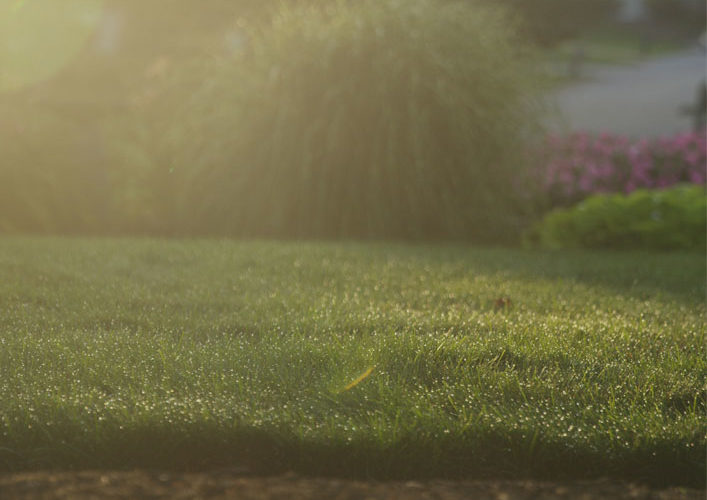Beat the Heat: Summer Plant & Lawn Care Tips

July and August bring the dog days of summer to Central PA with the “im”perfect combination of heat and humidity. Insufficient rain and seasonal droughts are not uncommon. Periods of low rainfall and intense heat can put your lawn and plant beds under a lot of stress, resulting in brown lawns and withered plants.
These summer plant and lawn care tips from our local garden experts can help you keep your yard thriving and looking its best through the intense summer season.
Watering Techniques for Summer Plant Care
Good watering practices result in strong, deep root systems that can safely withstand drought and resist pests and disease. Many plants die from too little water (well-drained soils) or too much water (poorly drained soils/clay) during the first few months after planting.
Instead of a daily light sprinkling, a good deep soaking once or twice a week is better for plants. Plants soak up the majority of their moisture through their roots. Most of the water that lands on the foliage is lost due to evaporation. Thus, the more water directed to the soil, the less you will waste.
The best summer watering techniques are drip irrigation or a soaker hose. Here’s how to get started with one of those:
- Use a normal garden hose to connect a soaker hose or drip irrigation system to the tap. Timing devices can be added to make turning off and on automatic.
- Snake the hose through the garden instead of running it in a straight line. Use a trowel or hoe to make a shallow ditch throughout your beds and place the soaker hose or drip irrigation. Cover it up with mulch to hide and reduce evaporation.
Other watering tips from our Garden Team Members:
- Water trees at their drip line and not just at the trunk. Most of the active roots of a tree are further away from the trunk.
- It’s best to water early in the morning. Morning temperatures are cooler and give off less solar radiation, so less moisture is lost due to evaporation. Also, early watering decreases the chance of fungal infection, especially during humid weather.
- If weather conditions have been extreme over a long period of time, your local municipalities may have watering restrictions in place, so be sure to check into that before turning on your hose.
Choose Drought Tolerant Plants
Drought tolerant plants are adapted to grow well in regions that get minimal amounts of rainfall. These plants require less water to live. Plants best adapted the hot, dry conditions of this region include plants native to the region and plants with deep taproots that find their way deep into the soil and store moisture.
Our guide to Drought Tolerant Plants will help you choose the best trees, shrubs, perennials, annuals, and grass to survive a dry, hot summer season.
Keep Your Lawn Green in the Summer Heat
When summer cranks up the heat, you’ll start to see some changes in your lawn. Instead of a soft, lush, green lawn, you may encounter brittle blades of grass that are turning brown. Keep your lawn green and healthy in periods of high heat and low precipitation with these mowing and watering tips.
Don’t cut your lawn too short. When grass is cut too short it loses its ability to produce energy for regrowth. When mowing, use the highest setting on your lawn mower and don’t cut more than 1/3 of the height at once. When you mow, don’t bag your grass. Grass clippings can be beneficial since they fertilize your lawn as they decompose. In fact, you may want to avoid mowing altogether during a period of seasonal drought.
It may sound counter-intuitive, but in extreme heat, don’t over water your lawn! Too much water can deprive roots of oxygen and make your lawn prone to disease. Lawns only need about 1’ of water per week (including any rainfall). Use the “eye” test. You’ll see when your grass starts to look dry. Concentrate on nursing “hot spots” back to health with additional watering, instead of focusing on your whole yard all at once.
Learn more about tending to your lawn throughout summer and all year long by visiting our Lawn Care page.
